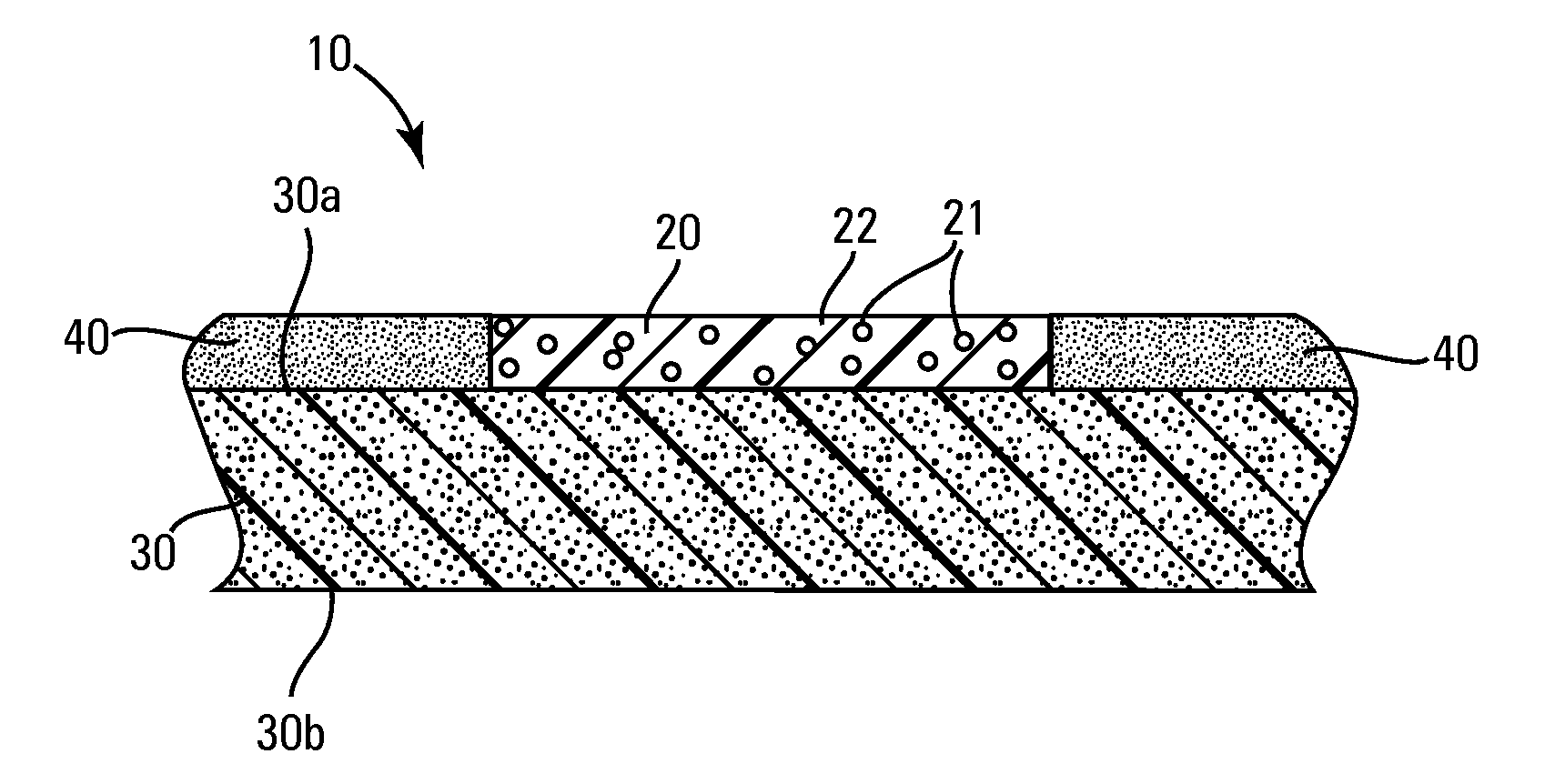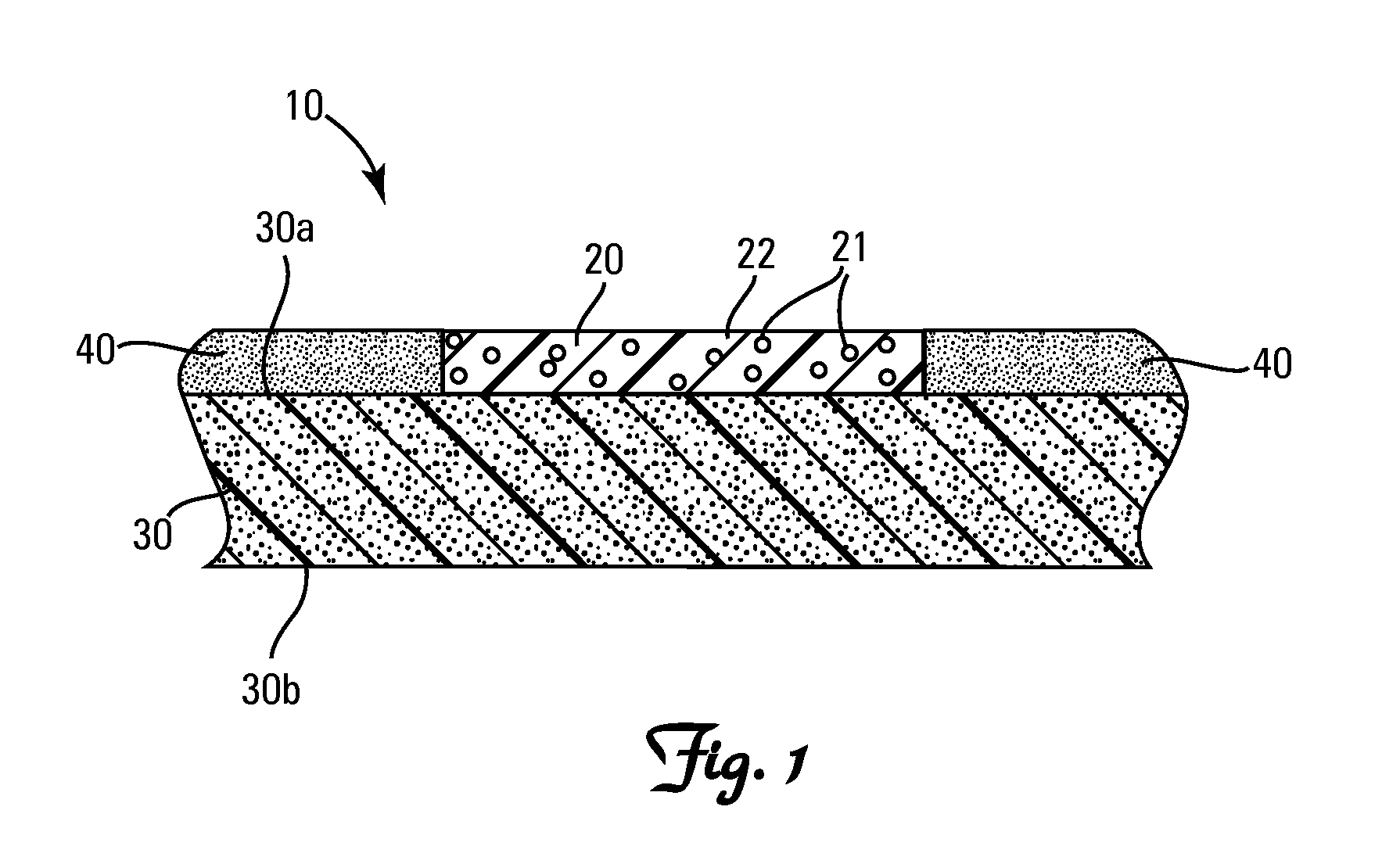Photoluminescent oxygen probe with reduced cross-sensitivity to humidity
a technology of oxygen probes and photoluminescent oxygen, applied in the direction of fluorescence/phosphorescence, instruments, analysis using chemical indicators, etc., can solve the problem of preventing them from gaining wide acceptance for us
- Summary
- Abstract
- Description
- Claims
- Application Information
AI Technical Summary
Problems solved by technology
Method used
Image
Examples
Embodiment Construction
Definitions
[0009]As used herein, including the claims, the phrase “oxygen permeable” means a material that when formed into a 1 mil film has an oxygen transmission rate of greater than 1,000 c3 / m2 day when measured in accordance with ASTM D 3985.
[0010]As used herein, including the claims, the term “spinlaid” means a process for producing fibrous nonwoven fabric directly from extruded polymer fibers and includes spunbond and meltblown techniques.
[0011]As used herein, including the claims, the phrase “thin film” means a film having a thickness of less than 10 μm.
[0012]As used herein, including the claims, the term “wettable” means the ability of water to maintain contact with the surface of the solid sufficient to provide good aqueous wicking characteristics.
[0013]As used herein, including the claims, the phrase “moderately wettable” means that water maintains a contact angle θ of less than 90°.
[0014]As used herein, including the claims, the phrase “highly wettable” means that water m...
PUM
 Login to View More
Login to View More Abstract
Description
Claims
Application Information
 Login to View More
Login to View More - R&D
- Intellectual Property
- Life Sciences
- Materials
- Tech Scout
- Unparalleled Data Quality
- Higher Quality Content
- 60% Fewer Hallucinations
Browse by: Latest US Patents, China's latest patents, Technical Efficacy Thesaurus, Application Domain, Technology Topic, Popular Technical Reports.
© 2025 PatSnap. All rights reserved.Legal|Privacy policy|Modern Slavery Act Transparency Statement|Sitemap|About US| Contact US: help@patsnap.com


